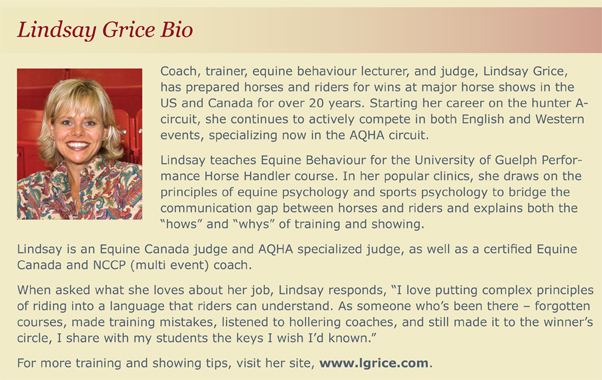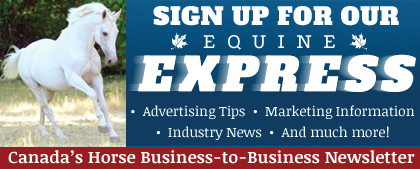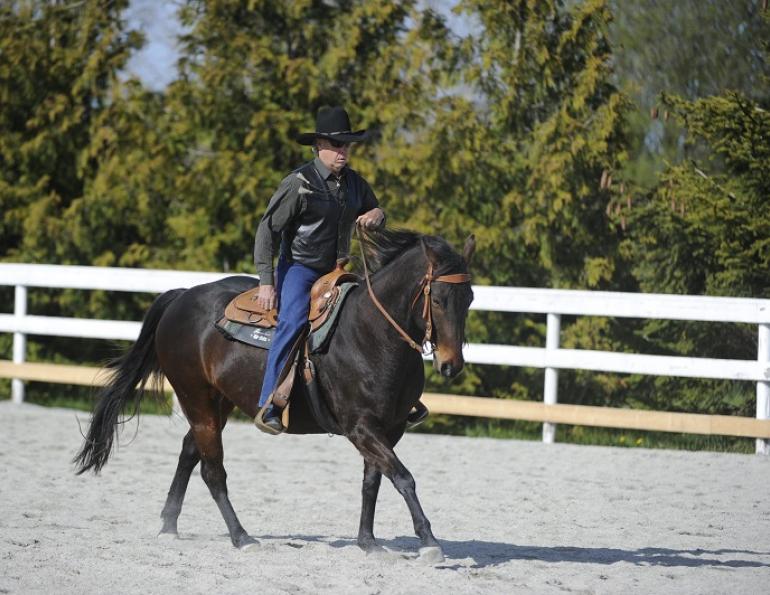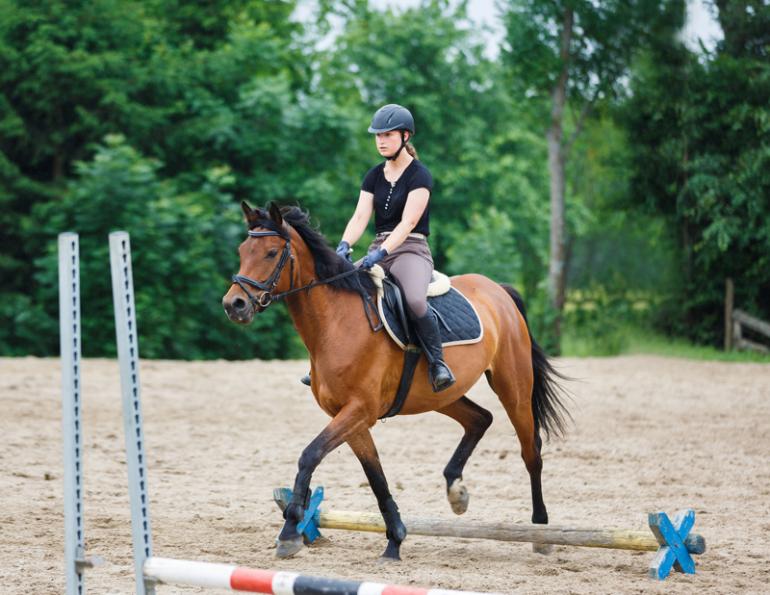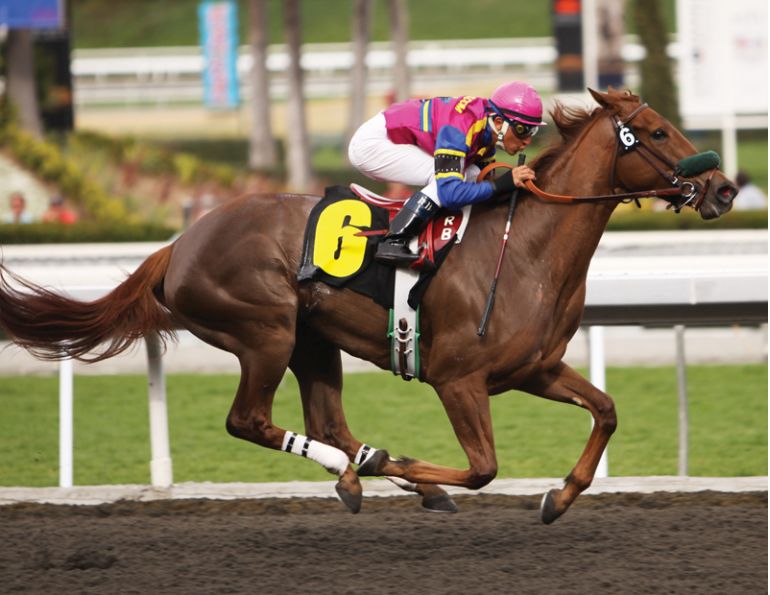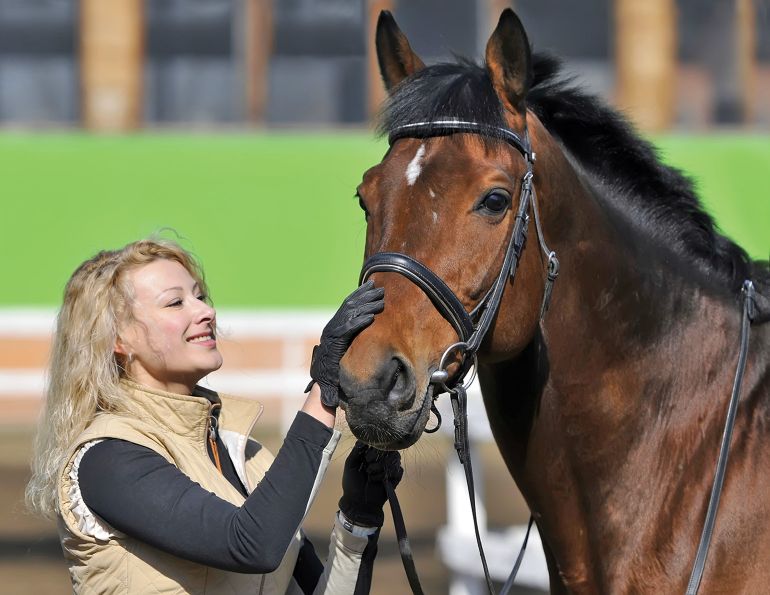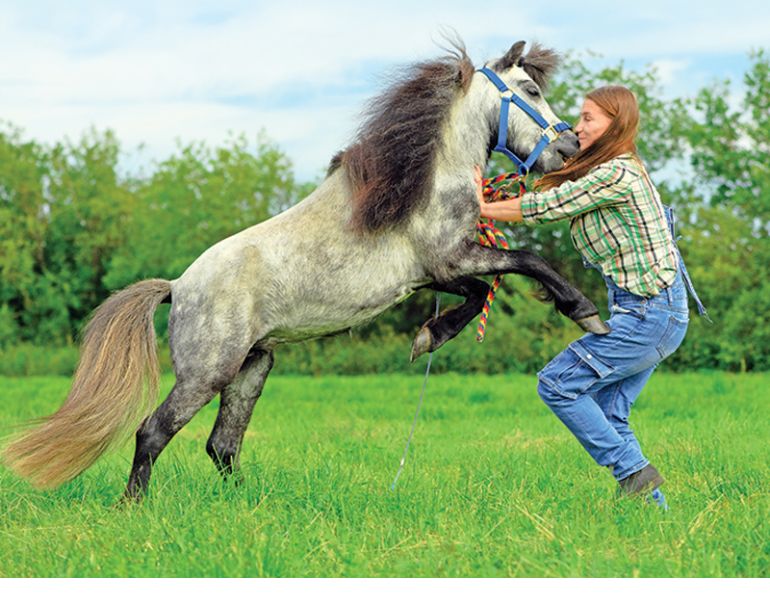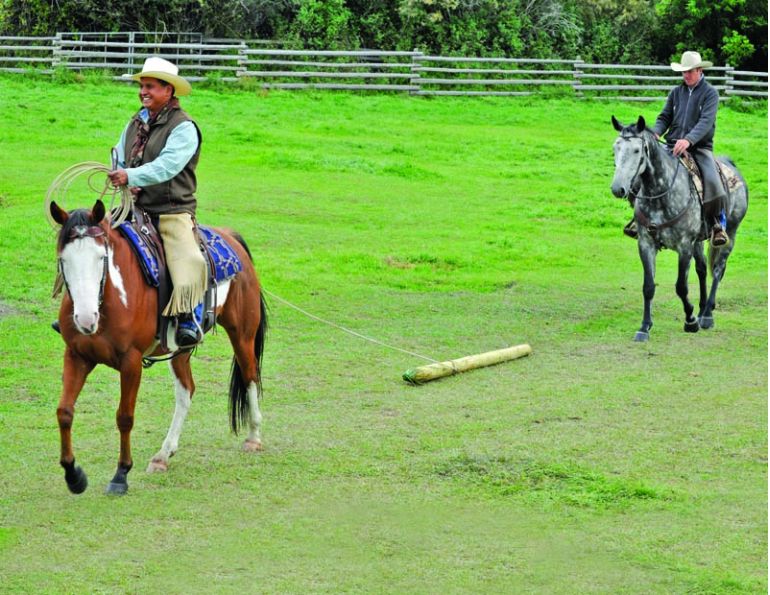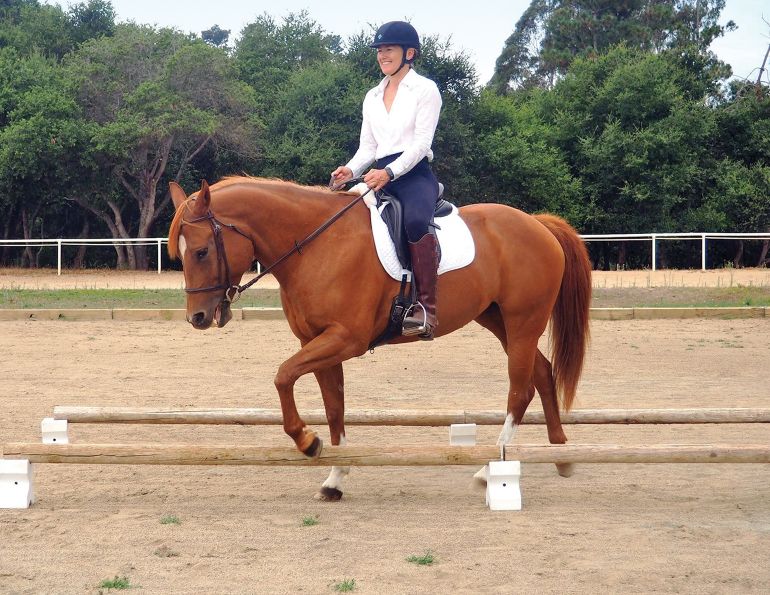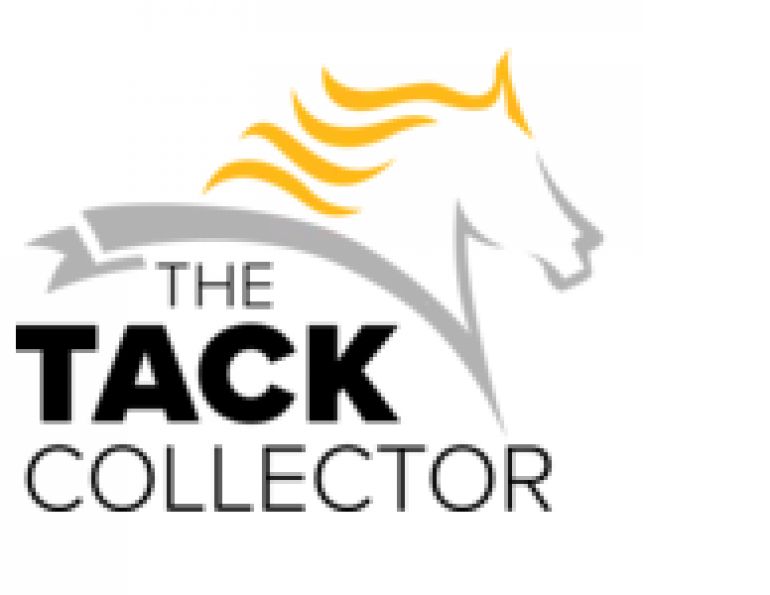By Lindsay Grice
Q I have a prospect that I am considering sending to a trainer. Although I am quite a capable horsewoman I am not an expert when it comes to starting horses under saddle. In the interest of saving money and keeping his stay at the trainer’s as short as possible, what could I accomplish at home before he goes to the trainer?
A There are quite a few things that horse owners can do at home to assist the training process. Saddling and riding is one more step in the horse’s education (which largely consists of yielding to pressure and counteracting his “fright-flight” instinct). What separates a trainer from a novice is the timing and intensity of their cues and rewards. Although I appreciate certain ground work done on a horse that comes to me for training, this work attempted by a novice can actually make things more difficult. Undesirable habits or even fear can develop as a result of a person delivering cues at the wrong time and in the wrong way. Here are some skills I make sure are in place before I climb aboard:
Respect from the Ground
With the horse by my side, I will walk forward and stop, making sure that I don’t have to use the lead shank to cue him at all (this is basic showmanship training). He knows where his freedom box is because I consistently correct him when he steps out of it and reward him with freedom when he remains inside. He should ground tie in the barn aisle. He should back up willingly with minimal touch from the shank.
Lunging
A prospect should lunge well, responding to voice commands and body language. I’m a minimalist when it comes to voice commands. The commands “whoa,” “cluck,” and “kiss” should have specific meanings and should get an immediate response (no nagging!). Add another word of your choice for a downward transition, and that should just about do it. These words will be used as a bridge to teach your aids once in the saddle. I’m not a big fan of chattering to horses as I think it desensitizes them when you really want to say something (like “The Boy Who Cried Wolf”).
The youngster should move forward when your whip swings toward his hind end and away from you when it points toward his shoulder (avoid the stage coach cracking style of whip handling). He should easily maintain a balanced canter until you ask him to trot.
Give to Pressure
After becoming comfortable wearing a snaffle bridle, a horse should be taught to flex to pressure in his mouth. I begin by asking him to give softly to one rein pulled from the side. I usually drape my arm over the far side of the saddle while standing on the ground and holding one rein in each hand, asking the horse to give from side to side. Next, I ask him to back up in response to pressure with both reins. He should also flex his jaw toward his chest when both reins are used with a spongy squeezing hand motion. Mission accomplished when you feel no resistance, mouth gaping, or head rising. I also ask the young horse to step away laterally from my hand pressure on his side, shoulder, or hip without hesitation.
Tying Up
Only after a horse is familiar with giving to pressure in every area of his body will I tie him up. I expect him to tie in a stall or at the side of my arena wall and wait patiently.
Saddle
I make sure the horse is completely comfortable with the saddling process and lunging with a saddle on, even with the stirrups bouncing. I’ll put my foot in the stirrup and bounce up and down as in the beginning stages of mounting. If he flinches at all, he’s not ready to ride.
Travelling in a Frame
With side reins I want a horse to be very comfortable travelling in a frame on the lunge line. I make sure that he will calmly do canter to trot to canter transitions, developing his own balance and self carriage.
With these skills in place, your trainer can progress sooner to under saddle work. Skipping these steps leads to a rougher education process for horse and horseman.
Main Article Photo: A young horse should be taught respect from the ground. However, amateur owners should make sure they are not creating undesirable habits that will make it more difficult for a trainer later on.
This article originally appeared in the March 2010 issue of Pacific & Prairie Horse Journal.